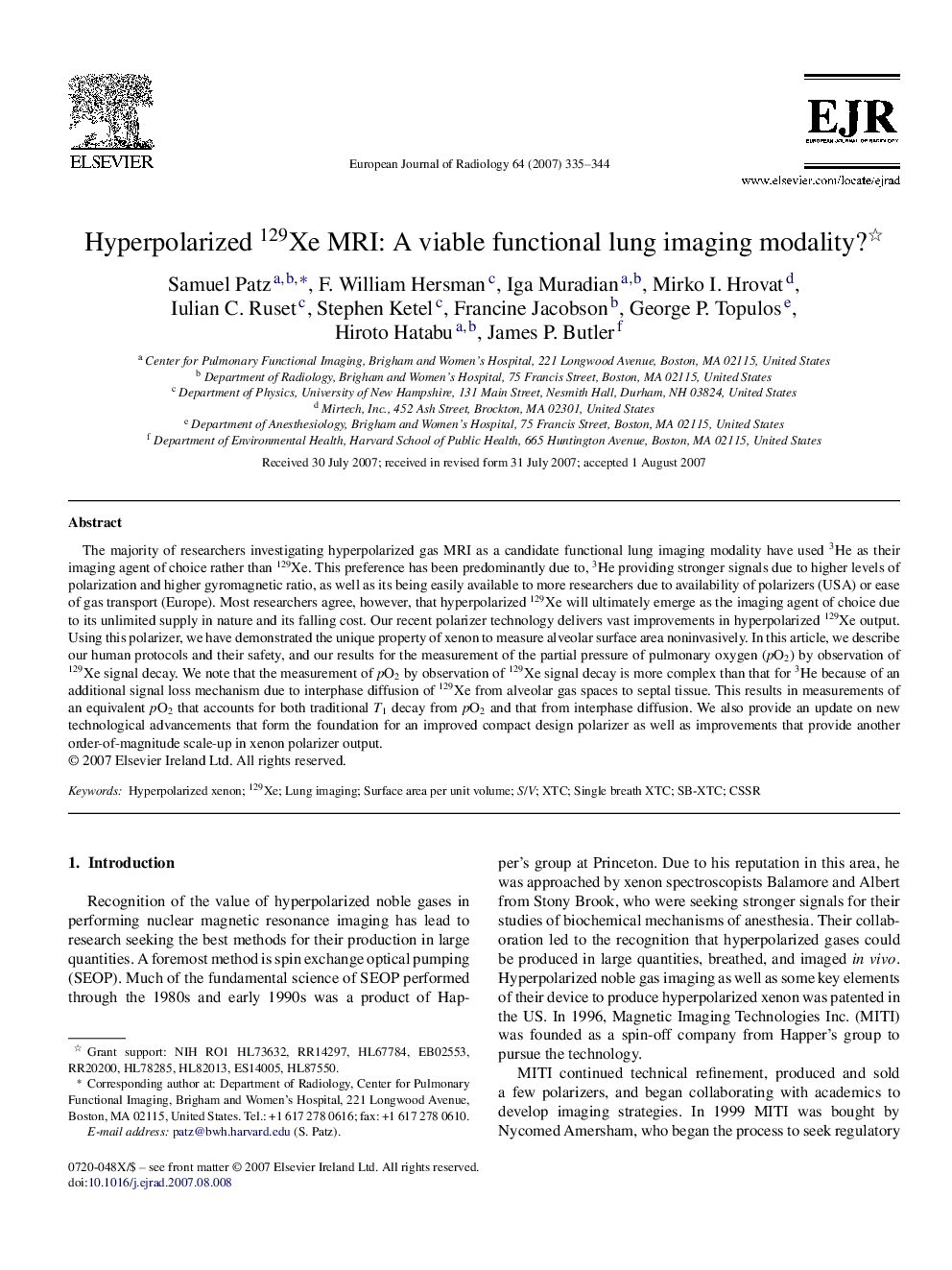| Article ID | Journal | Published Year | Pages | File Type |
|---|---|---|---|---|
| 4227813 | European Journal of Radiology | 2007 | 10 Pages |
The majority of researchers investigating hyperpolarized gas MRI as a candidate functional lung imaging modality have used 3He as their imaging agent of choice rather than 129Xe. This preference has been predominantly due to, 3He providing stronger signals due to higher levels of polarization and higher gyromagnetic ratio, as well as its being easily available to more researchers due to availability of polarizers (USA) or ease of gas transport (Europe). Most researchers agree, however, that hyperpolarized 129Xe will ultimately emerge as the imaging agent of choice due to its unlimited supply in nature and its falling cost. Our recent polarizer technology delivers vast improvements in hyperpolarized 129Xe output. Using this polarizer, we have demonstrated the unique property of xenon to measure alveolar surface area noninvasively. In this article, we describe our human protocols and their safety, and our results for the measurement of the partial pressure of pulmonary oxygen (pO2) by observation of 129Xe signal decay. We note that the measurement of pO2 by observation of 129Xe signal decay is more complex than that for 3He because of an additional signal loss mechanism due to interphase diffusion of 129Xe from alveolar gas spaces to septal tissue. This results in measurements of an equivalent pO2 that accounts for both traditional T1 decay from pO2 and that from interphase diffusion. We also provide an update on new technological advancements that form the foundation for an improved compact design polarizer as well as improvements that provide another order-of-magnitude scale-up in xenon polarizer output.
